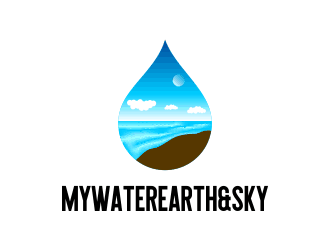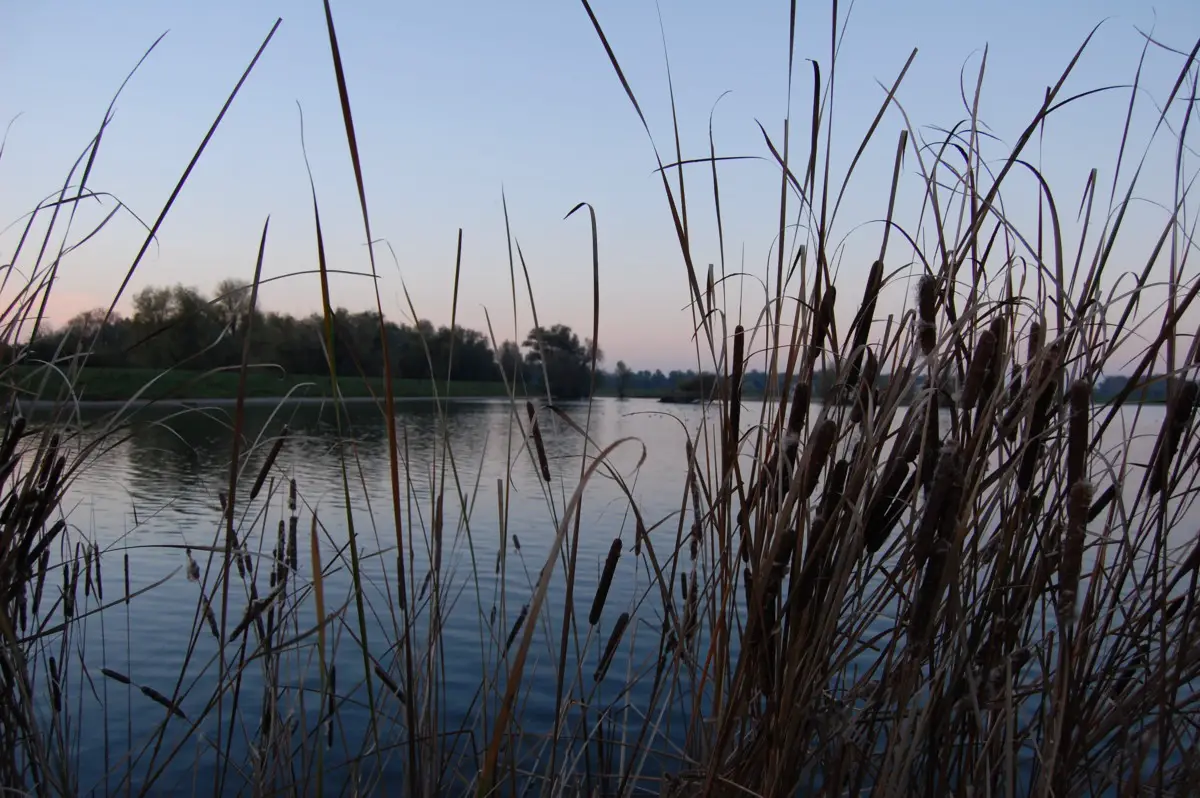Nature constantly keeps changing, making itself better and repairing itself in a finely balanced way that just is amazing and the more time you spend outdoors the more you understand how complicated and fragile it is, like how a few degrees in temperature can move huge amounts of water in the deepest lake not only once but twice a year every Spring and Fall. When does lake turnover occur?
Spring Turnover of a Lake:
- Wind & Sun heat & Mix surface to about 50°F.
- Warm H2O sinks Down
- Bottom layer is displaced & moves up
- Temp & Oxygen remain uniform
Fall turnover of a Lake:
- Cold Winds mix & cool surface
- Cooler Dense H2O sinks down
- Bottom layer is displaced & moves up
- Temp & Oxygen remain uniform
Water is a wonderous element here on Earth; when water freezes to ice, it floats. When most compounds change from liquid to solid, they become heavier. But not water. Water molecules become less dense and spread further apart as water freezes. If not for this unique property of water, lakes would freeze solid from the bottom up, and there would be little, if any, chance for living things to exist in them.
When Does Lake Turnover Occur
Lake turnover typically occurs in the fall and spring when the temperature of the water at the surface becomes similar to the temperature of the water at the bottom of the lake. This process is driven by changes in temperature and density.
In the fall, as the air temperature cools down, the surface water of the lake begins to cool as well. As it cools, it becomes denser and sinks to the bottom, displacing the warmer water below. This process continues until the entire water column reaches a relatively uniform temperature, resulting in turnover.
In the spring, the opposite occurs. As the air temperature warms up, the surface water of the lake begins to warm as well. As it warms, it becomes less dense and stays at the surface. Eventually, the warmer surface water begins to mix with the cooler water below, leading to turnover.
Turnover is an important process in lakes as it helps distribute oxygen and nutrients throughout the water column, which is essential for the health of aquatic ecosystems. It also helps regulate water temperature and can impact the distribution of aquatic life within the lake.
Because of the wide range of temperatures in lake water, Thermal Stratification is a typical natural occurrence. that happens in late Spring and Summer. The lake will have 3 different layers of temperature. The sun warms the uppermost layer, and cooler water separates into 2 more layers.

Fall Turnover in Lakes
In Winter, there is no Stratification as the whole lake cools and the overall temperature of the water becomes uniform. For most of the year, there are layers separated by temperatures and density differences.
- Epilimnion level is the top level that is constantly mixed by wind and waves and is warmed by the sun from the late spring to late Fall.
- Metalimnion level- is the middle level that is characterized by a steep gradient in temperature and is the barrier that prevents mixture and the heat exchange between the Epilimnion level and the Hypolimnion levels in the lake. This layer is also called the Thermocline because of its rapid decrease in temperature and O2 concentration levels.
- Hypolimnion level is the deepest and coldest of water levels and does not mix with the other layers, and it has low circulation. It also contains water with a maximum density and temperatures of 4°C or 39.2°
Oxygen levels will also decrease beneath this line. Above the thermocline, fish survive comfortably in the oxygen-rich water. Below that line, the Hypolimnion, which is a level with the lowest oxygen levels, discourages fish from living there.
The decomposing organic matter at the lake bottom contributes to the low dissolved oxygen content. The coolest water at this level is the densest and weighs the most, while the warmer water in the Epilimnion is less dense.
The deeper the lake, the larger the gradients become in the Thermal Stratification. If you have ever been out on a boat in a deep lake and decided to jump out and go for a swim, you can really feel the difference in the layers from the top warm water level to the Thermocline level if you dive deep enough and hit the top of it.
There is a huge temperature difference. The top few feet depending on how deep the lake is can be quite warm, almost the same temperature as the air on top of the boat. The water drops right down to cool, not far down off the surface of the lake. That cooled level of water is the Thermocline level of the lake.
Lake Turnover Water-Oxygen-Temperature
The density of water depends on its temperature. The warmer the water, the less dense it becomes. Water is at its densest closest just before it freezes. Liquids of different densities often don’t mix easily.
The bigger the difference in density, the harder it is to get the liquids to mix. If you think about oil and vinegar in a salad dressing, the same type of resistance to mixing also occurs in water that has different temperatures.
Spring Lake Water Turnover Oxygen
- Water is closer & opened up to the atmosphere
- Water is exposed to the wind
- Water is exposed to oxygen producers like plants, algae, and other microorganisms using Photosynthesisers exchanging carbon dioxide and expelling Oxygen.
Spring turnover in a body of water is important for the same reason as Fall Turnover. Once thermal stratification sets up, the deeper Hypolimnion level does not get mixed to the surface, and whatever dissolved oxygen exists in the Epilimnion level of the lake is all that is available until lake turnover in the fall.
Fall Turnover Water Mix

When the Fall Turnover happens, prevailing winds over the surface start to get colder and slowly cool down the top layer, which makes the surface water, with the help of these cold winds, heavier and causes them to sink.
This will cause the cause of Turnover and make the whole lake mix with the water column of the entire lake, called the Fall Turnover. Water at lower temperatures and denser can mix much easier.
This effect will end result will make the lake’s water entirely uniform in temperature and oxygen. After a few days or weeks, the lake settles down into Winter Stratification.
If you are on this body of water during the year, you will notice an obvious smell, and decomposed material that was on the bottom of the lake is now on top.
The smell comes from hydrogen sulfide gases that were trapped at the bottom of the lake as aquatic plants and materials break down and collect on the lake’s bottom, then released throughout the water column by the turnover.
This is a dramatic event for the lake as well as the fish that live in the lake. During the winter months, a temperature differentiation of only seven degrees is within the lake, 32 degrees just under the ice to the consistent 39 degrees at the bottom, which will remain stable, as ice cover prevents winter winds from mixing the water.
As the Fall Turnover continues into Winter, the transition continues as the upper layers get colder and approach the freezing mark of 32°. Not all lakes freeze, and you don’t have to have a frozen surface for a lake to go through winter stratification. The body of water or this lake just needs to have the colder water on the top layer at 4° Celsius.
This means that in Winter, the inverse stratification happens then what happens in Summer stratification occurs with the warmer layer of water on top and the cooler layer of water below.
Lake Turnover Smell
Oxygen from the surface mixes with the bottom. Nutrients and decomposing organic matter from the bottom is mixed up throughout the lake. This is why some lakes will have an unpleasant smell in the fall. If the turnover happens too quickly, the oxygen level can drop low enough to result in a fish kill.
The mornings have been getting a bit chillier as we move deeper into fall, and one of the seasonal changes that can occur at this time of year is stratification, also known as turnover.
A certain telltale sign of turnover can be a peculiar smell in waterbodies of all sizes, including ponds, tanks, and reservoirs. Gases present in the water – especially hydrogen sulfide – cause what is sometimes referred to as a rotten egg-like smell.
Lake Turnover explanation and Diagram, watch this video:
Even when ice develops across the top surface of a lake, some sunlight can penetrate the ice into the water providing just enough oxygen and food for fish and other organisms, and somehow, for the most part, fish and other aquatic living things make it through another cold winter in Nature.
Thermocline Fishing
Give yourself an edge in the science of fishing. The more knowledge you can get your hands on, the better and more successful you will be fishing in different zones and water columns with any type of fish. Reading through this article, you may have read and hopefully learned that determining factors like the Sun, temperature, and oxygen levels make changes in different layers, especially in lakes.
Lakes can contain numerous types of ecosystems, all near each other locations. Oceans’ saltwater and big freshwater lakes within a hundred feet of each other can have layers. For fishing, this could be the Secret Sauce you need to step up your game. You can step up your tackle and bait the tools of the trade along with your basic knowledge of what you learned over the years. “Let’s get Scientific-Yall!”
A thermocline is a thin but distinct layer in a large body of fluid in which temperature changes more drastically with depth than it does in the layers above(Epilimnion level) or below (Metalimnion level). In the ocean, the thermocline level divides the upper mixed layer from the calm deep water below, with varying oxygen levels and water temperature, but in most deeper water bodies, lake turnover do occur.
Check some of these electronic portable water testers through Amazon for Ice Fishing or in the spring when trout than Largemouth seasons are open. Optical Dissolved Oxygen Meter Tester Water Quality Monitor DO Meter with DO Probe can also measure tests like Ph and Salinity, which are good water tests for fishing for Largemouth Bass in Brackish waters or rivers where systems change.
Algae Oxygen in Lake Turnover

References:
IISD- How and Why Lakes Stratify and Turn Over: We explain the science behind the phenomena
Outdoor News- Catching fish around the challenging “fall turnover”
FAQ’s

